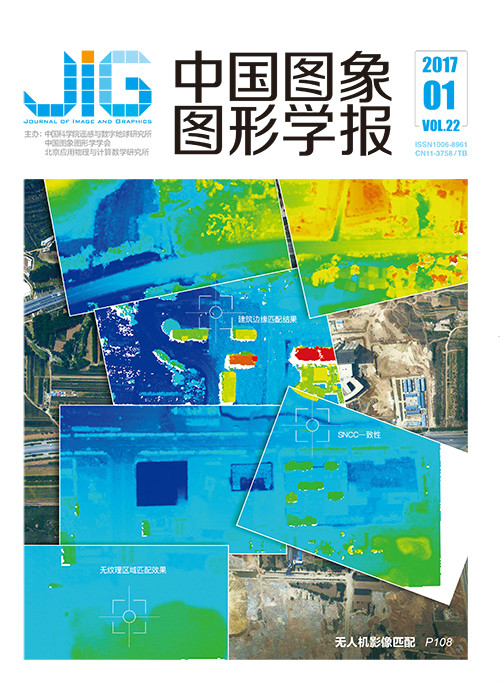
刚体碎块的断裂面匹配
赵夫群1,2, 周明全2,3, 耿国华2(1.咸阳师范学院教育科学学院, 咸阳 712000;2.西北大学信息科学与技术学院, 西安 710127;3.北京师范大学信息科学与技术学院, 北京 100875) 摘 要
目的 刚体碎块匹配已经在考古、生物工程以及遥感数据处理等领域得到了较为广泛的应用,为了进一步提高碎块匹配的精度、速度和算法的抗噪性,提出一种先粗配再细配的刚体碎块匹配方法。方法 首先采用基于显著性区域的碎块断裂面匹配方法实现碎块的粗匹配,然后通过加入高斯概率模型、角度约束和动态迭代系数的方式来改进迭代最近点(ICP)算法,并采用该算法来实现两个刚体碎块断裂面的细匹配,从而完成两个碎块的最终精确匹配。结果 通过分别对公共碎块数据集和带有噪声的秦俑碎块数据模型的匹配实验结果表明,与ICP(iterative closest point)算法和概率迭代最近点(PICP)算法相比,提出的改进ICP算法在精度方面分别提高了约50%和15%,在速度方面分别提高了约65%和50%,是一种精度更高、速度更快、抗噪性更强的点集匹配算法。结论 该方法不仅能够实现公共碎块数据集的完美匹配,而且对于秦俑这种特殊的刚体碎块也具有良好的匹配效果,会有更加广阔的应用领域和发展前景。
关键词
Fracture surface matching method of rigid blocks
Zhao Fuqun1,2, Zhou Mingquan2,3, Geng Guohua2(1.College of Education Science, Xianyang Normal University, Xianyang 712000, China;2.College of Information Science and Technology, Northwest University, Xi'an 710127, China;3.College of Information Science and Technology, Beijing Normal University, Beijing 100875, China) Abstract
Objective Rigid block matching is the process of searching a 3D rigid transformation that can make the common parts of two surfaces of different blocks in different coordinates match correctly. This process has been widely used in many research fields, such as archaeology, biological engineering, and remote sensing data processing. A new matching method is proposed in this study to further improve the accuracy, convergence speed, and anti-noise capacity of the existing rigid block matching algorithms. Method The method can be divided into two steps, namely, coarse and fine matching processes. First, fracture surfaces are extracted from rigid blocks, and the concave and convex salient regions on fracture surfaces are calculated. Block coarse matching is completed through the matching algorithm based on salient regions. Second, the Gaussian probability model, angle constraint, and dynamic iteration coefficient are added to the iterative closest point (ICP) algorithm to improve ICP performance, and the improved ICP algorithm is used to further match the rigid blocks for fine matching of rigid blocks. Result In the experiment, two types of data models (public blocks and Terracotta Warrior blocks) are used to illustrate the performance of the improved ICP algorithm. Matching results show that the accuracy and convergence speed are increased by 50% and 65%, respectively, compared with the ICP algorithm and 15% and 50%, respectively, compared with the Picky ICP algorithm. The improved ICP algorithm is indeed a much more accurate, faster, and better anti-noise algorithm than other algorithms. Conclusion This improved algorithm can match not only public blocks perfectly but also the special Terracotta Warrior blocks much better than other algorithms. This algorithm is a good method of rigid block matching with extensive applications.
Keywords
blocks matching salient region iterative closest point Gaussian probability model angle constraint dynamic iteration coefficient
|



 中国图象图形学报 │ 京ICP备05080539号-4 │ 本系统由
中国图象图形学报 │ 京ICP备05080539号-4 │ 本系统由